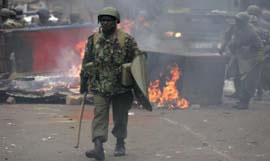The first thing that I learned about Jakarta was that physical displacement was HARD to do. Often you could walk to meetings faster than you can drive... that is if there were sidewalks and it wasn't 85-90 degrees plus 90% humidity, oh and yeah, the air pollution (though I'm told that its leagues better than it was 10 years ago). I learned my lesson the hard way... I was nearly late for my first meeting.
 |
| Brown flood waters fill the streets of central Jakarta |
I took 45 min to go 2.5 miles; and then tack on another 10 minutes to get an elevator... and I was a couple minutes late for a meeting at the UN. Luckily it was an informal meeting and we ended up at Starbucks in search for air conditioning.
First, you might be asking why we were on the search for AC. Well, the UN's AC was out due to electricity problems following the massive floods in Jakarta after a rivers spilled over and flood gates had to be raised. Luckily for me, most of the flooding had receded by the time I arrived, but we still took some taxis through a couple of questionable streets in both Jakarta and then in Kendari.
Second, you might be thinking... Starbucks? Yes, in many ways it was like taking a different mix of ethnicities and throwing them into a city in the USA. Starbucks, McDonalds, KFC, Burger King, Ace Hardware, Gap, Banana Republic, and the list of familiar names goes on and on. The defining differences between Jakarta and a US city, the traffic is a little worse than say DC or LA, but really its the slums two blocks away that surround the skyscraper islands. Its a strange mix of modern and traditional, economic growth and adverse poverty. Thus is Jakarta... an embodiment of the two worlds of Indonesia.
After learning my lesson about the speed of physical mobility in Jakarta, I planned better for meetings across town with USAID, the Indonesian government, and with our "partners". "Partners" in USAID speak means the companies and NGOs to which we give money to actually implement the development activities. I'm not good at names and I've even worse when they're names I don't know. Its a good thing I've been collecting business cards... though I'm worried I'm running out of my USAID cards!!
All and all it was a long and crazy week in a Jakarta.






















